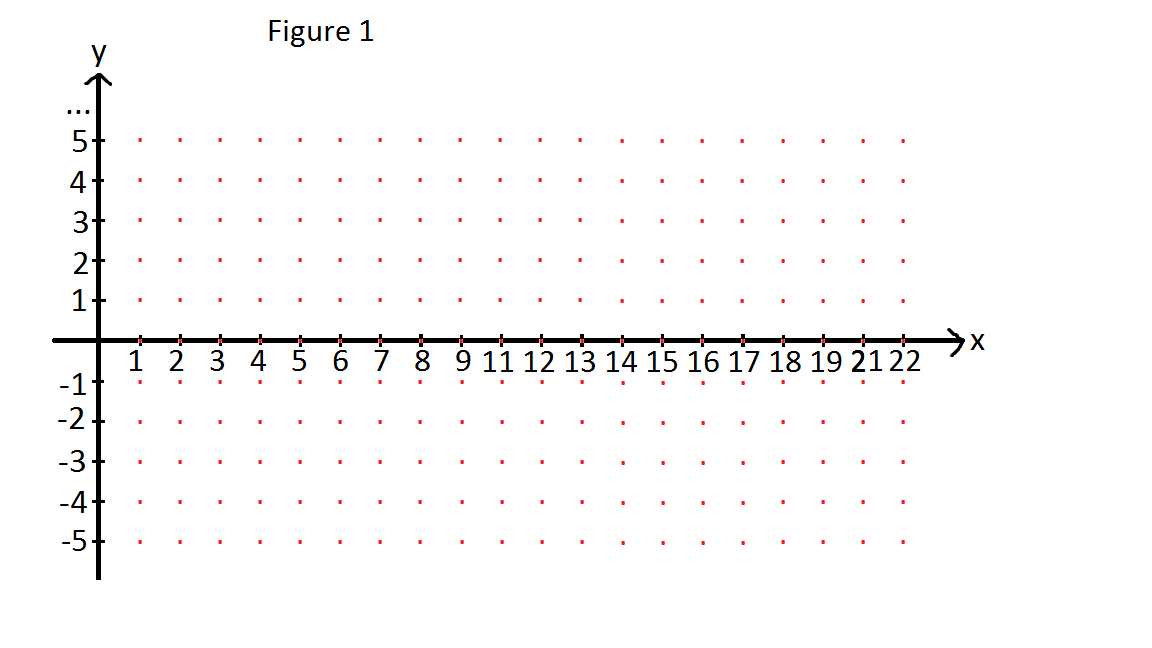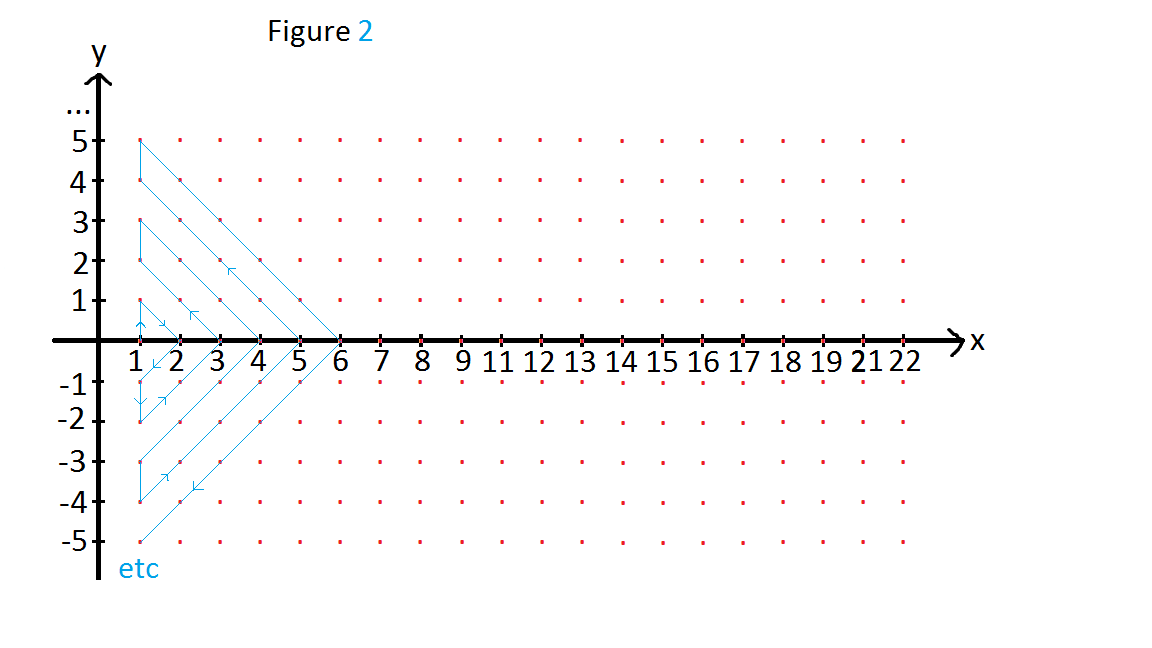How to list all the elements of the set of real numbers?
I heard that the set of real numbers is uncountably infinite, meaning that it is not possible to list out all the real numbers in an orderly manner. I thought of a way to list out all the real numbers, in sequence. Can someone tell me if there is a mistake in it? Or is this method correct, and Cantor was wrong?
Step 1: draw a graph of y against x, where x is positive. Consider only all points (x,y) such that both x and y are integers. Omit all multiples of 10, for the x axis. This is so that numbers do not repeat. Refer to Figure 1.
 Step 2: The coordinates of (x, y) will represent the numbers that are in the set of real numbers. If the coordinates are (2, 4) then that point represents the number In general, if the coordinates are (x,y) then the number that the point represents is .
Step 2: The coordinates of (x, y) will represent the numbers that are in the set of real numbers. If the coordinates are (2, 4) then that point represents the number In general, if the coordinates are (x,y) then the number that the point represents is .
Step 3: We can then put the numbers in a sequence, as shown in Figure 2.

We can continue the blue line pattern so that all points are covered, but it is not shown in the picture, because my computer does not have infinite space!
So the sequence is now,
1, 10, 2, 0.1, 0.01, 0.2, 3, 20, 100, 1000, 200, 30, 4 etc.
Step 4: Now we have to add in the negative numbers. We can slot the negative numbers between the positive numbers. We also have to add in 0, which can be put at the front.
So the sequence is now,
0, 1, -1, 10, -10, 2, -2, 0.1, -0.1, 0.01, -0.01, 0.2, -0.2, 3, -3, 20, -20, 100, -100, etc.
That's it! I have now listed every real number. Now to test this method.
Is 12345.6789 in the list?
Yes, its coordinates are at (123456789, -4). Thus, it is in the list because every coordinate if the graph is in the list.
Is in the list?
Let's first find 0.3. It is at (3,-1). 0.33 is at (33, -2). 0.333 is at (333, -3). In this way, would be at (333..., -). Haha!
Is in the list?
Yes. It is at (3141592653..., -)
I'm not sure if putting infinities as coordinates in a graph is acceptable, because
- is undefined. However, the list is also infinitely long!
Easy Math Editor
This discussion board is a place to discuss our Daily Challenges and the math and science related to those challenges. Explanations are more than just a solution — they should explain the steps and thinking strategies that you used to obtain the solution. Comments should further the discussion of math and science.
When posting on Brilliant:
*italics*or_italics_**bold**or__bold__paragraph 1
paragraph 2
[example link](https://brilliant.org)> This is a quote# I indented these lines # 4 spaces, and now they show # up as a code block. print "hello world"\(...\)or\[...\]to ensure proper formatting.2 \times 32^{34}a_{i-1}\frac{2}{3}\sqrt{2}\sum_{i=1}^3\sin \theta\boxed{123}Comments
There are no comments in this discussion.